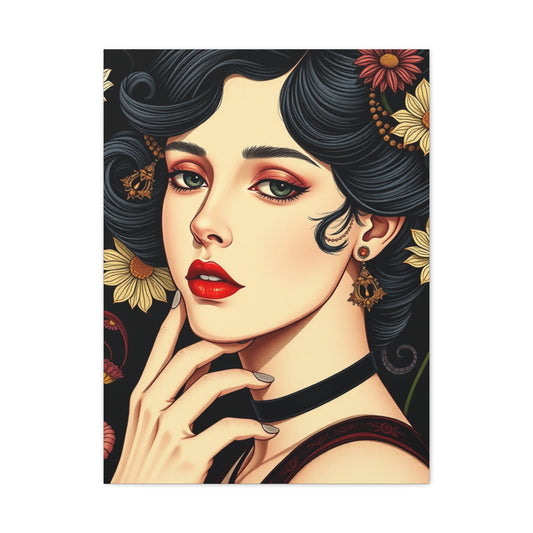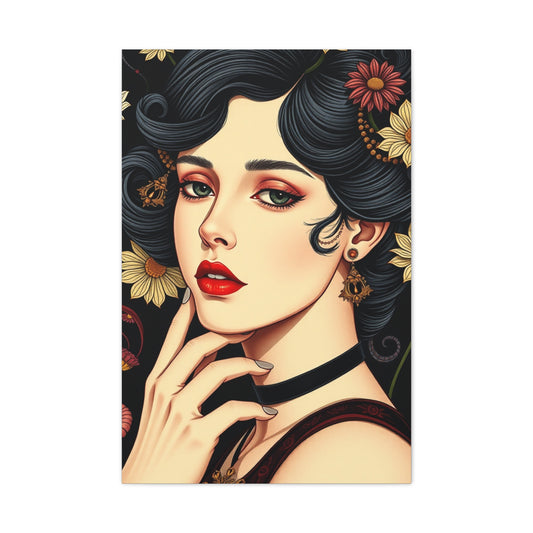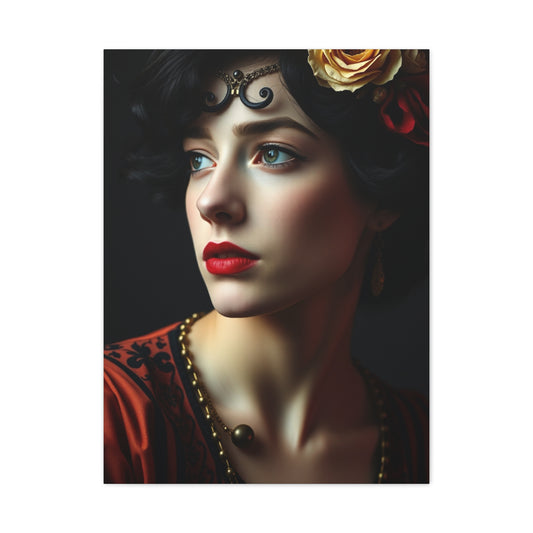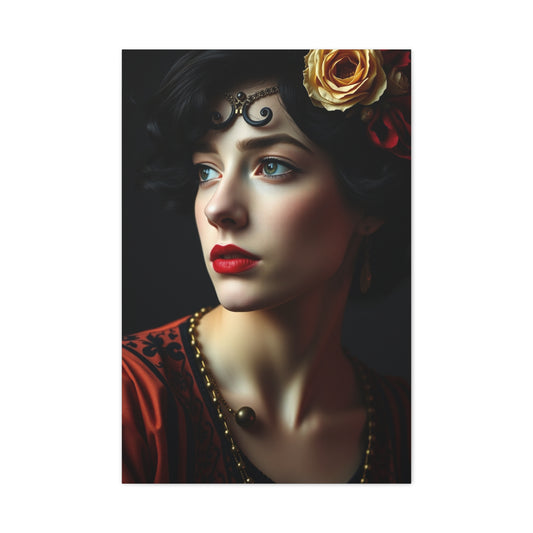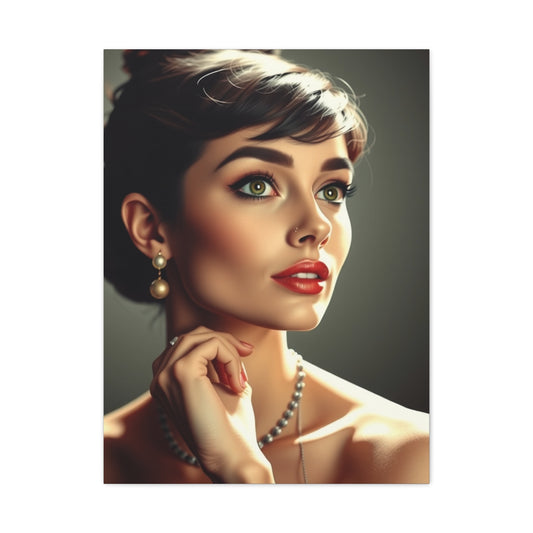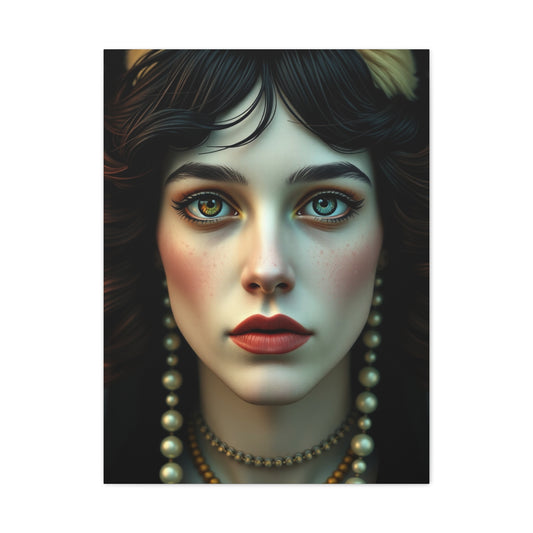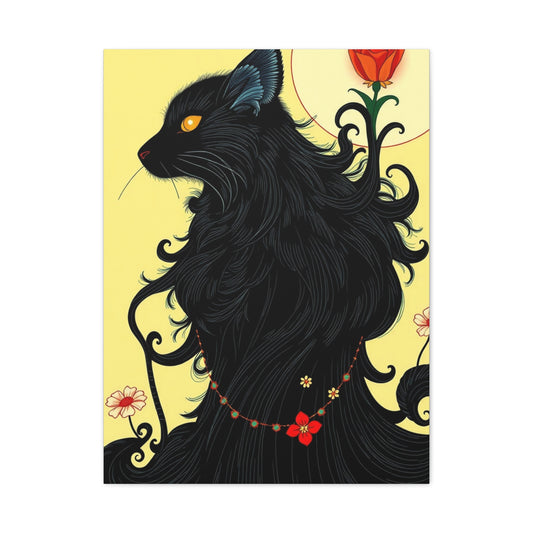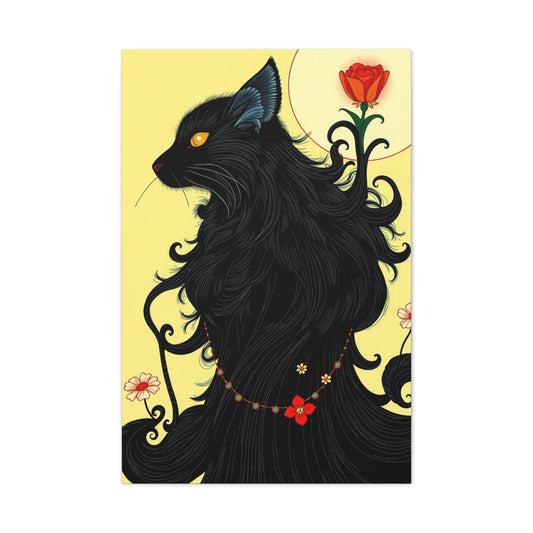Geometric wall art has transcended its role as a simple decorative feature to become a defining element of modern interior design in 2025. As the boundaries between function and form continue to blur, homeowners and designers alike are turning to geometric motifs to instill depth, direction, and visual intrigue into residential and commercial spaces. Whether used in a minimalist loft or a boldly curated gallery wall, geometric artwork introduces structure and artistry in equal measure.
With its characteristic clean lines, bold angles, and expressive compositions, geometric design remains a versatile mainstay of contemporary décor. From expansive oversized panels to micro-cluster installations, this trend proves not only resilient but endlessly adaptive to evolving aesthetics.
Modern Lines Meet Vintage Roots: The Rise of Geometric Expression
The ongoing evolution of geometric wall art in 2025 finds its foundation in a compelling marriage between mid-century inspiration and modern-day design sensibilities. This unique convergence has brought a renewed vitality to geometric expression, transforming what was once a utilitarian form into a highly personal and visually impactful statement within interior design. Rooted in the mid-20th century's affinity for form and function, today's geometric styles reinterpret vintage principles through a contemporary lens that emphasizes fluidity, scale, and experimentation.
Designers and homeowners alike are captivated by this synergy. Rather than adhering strictly to traditional symmetry or stark minimalism, current geometric wall art exhibits a hybrid character. It simultaneously echoes retro simplicity and introduces new dimensions of visual intrigue through layering, color progression, and abstract geometry. Angular silhouettes are no longer restricted to clean lines and static forms; instead, they are juxtaposed with organic movement, softened edges, and unexpected gradients that breathe life into static surfaces.
This design language continues to gain popularity due to its inherent flexibility. It adapts to a variety of interior styles, from ultra-modern lofts and Scandinavian-inspired homes to transitional and eclectic environments. The interplay between precision and unpredictability offers a multidimensional appeal that aligns with the diverse aesthetic values of today’s homeowners. By embracing asymmetry, abstract repetition, and unconventional patterns, geometric art now acts as both a grounding feature and a source of energy within a room.
The Mid-Century Legacy: Geometry as Artistic Function
The enduring appeal of mid-century design lies in its disciplined simplicity, and this philosophy remains intrinsic to the use of geometry in contemporary art. The 1950s and 60s introduced a structural elegance characterized by geometric repetition, functional composition, and minimalist forms. Today, these principles live on in geometric wall art that celebrates spatial awareness, balance, and visual clarity—yet with new creative liberties that push past the boundaries of mid-century rigidity.
Classic motifs such as interlocking rectangles, concentric circles, and tessellated shapes have been reimagined in innovative ways. Artists are increasingly incorporating mixed media to add layers of depth and complexity to what were once flat designs. Through materials such as textured acrylics, wood inlays, metallic foils, and translucent overlays, the artwork attains an almost architectural presence on the wall. These formats don't just reflect light; they reshape it, producing dynamic visual effects that shift throughout the day based on natural and artificial illumination.
Moreover, the contemporary reinterpretation of mid-century geometry often plays with proportion and perspective. Traditional grid patterns have given way to freer expressions, where negative space becomes as essential as form. Color also takes on new meaning. While mid-century palettes were often earthy or pastel, today's geometric art embraces both ends of the spectrum—from subdued tones like dusty plum and moss green to saturated shades like electric cyan and terracotta. The result is a visual duality that pays homage to history while forging ahead with a bold, forward-looking approach.
Experiential Design: Geometry in the Immersive Interior
A major shift in interior design over the last decade has been the transition from static decoration to dynamic, immersive spaces. Geometric wall art now plays a vital role in this transformation, serving not just as visual décor but as an integral part of the sensory experience within a room. Rather than being confined to a single focal point, geometric elements often extend across entire walls or surfaces, wrapping around corners, flowing onto ceilings, or integrating with architectural features like staircases or alcoves.
This experiential approach is especially evident in large-scale installations and mural-inspired compositions. These works often defy traditional canvas constraints, instead favoring fluid arrangements that allow individual pieces to interact with surrounding furniture, lighting, and textures. For example, an angular mural painted behind a modular sofa can appear to ripple into the upholstery through color continuation and spatial alignment. These immersive techniques invite viewers to explore the room actively, discovering new visual relationships as they move through the space.
In addition, advances in material technology have enabled a new level of interaction between geometry and its environment. Textured panels, layered cutouts, and smart lighting systems make it possible for geometric art to respond to touch, motion, or changes in ambient light. These innovations not only elevate the artistic impact but also create emotionally responsive environments that reflect the mood, purpose, or energy of the space at any given time. Whether it's a calming corner in a reading room or a vibrant feature wall in a creative office, geometric art becomes an active participant in shaping the ambiance.
Versatility and Emotional Resonance in Geometric Design
What sets geometric wall art apart in 2025 is its emotional versatility. These designs are no longer viewed as cold or overly mathematical; rather, they serve as conduits for mood, atmosphere, and even storytelling. A series of interlaced polygons can symbolize connectivity and structure in a communal space, while flowing arcs and irregular shapes can convey serenity and fluidity in personal areas like bedrooms or bathrooms.
The emotional undertone of geometric art is deeply influenced by its color palette and compositional rhythm. A harmonious blend of soft curves and desaturated hues may evoke introspection, while bold, angular forms in high-contrast colors stimulate focus and engagement. This makes geometric designs highly functional for both residential and commercial environments where ambiance plays a critical role—such as wellness studios, boutique hotels, and collaborative workspaces.
|
Related Catagories: |
Beyond visual aesthetics, geometric wall art also aligns with the psychological desire for order amid chaos. In a world that often feels fragmented, the repeated patterns and symmetrical alignments of geometric design offer a sense of predictability and calm. Yet, when these patterns are disrupted or layered with unexpected variations, they reflect the nuanced realities of modern life—beautiful, complex, and full of tension. This nuanced storytelling is what gives geometric art its timeless relevance.
Design Meets Purpose: Geometry as a Visual Organizer
In contemporary interiors, geometric wall art serves as more than just visual embellishment—it plays a crucial role in spatial organization and the psychological flow of a room. This function has become even more vital in 2025, where open-concept living spaces and multi-functional areas are more common than ever. Through its structured form and strategic placement, geometric art establishes boundaries without the need for partitions, achieving aesthetic separation while maintaining openness.
Geometric wall art introduces a refined rhythm to any interior. With the deliberate placement of grids, diagonals, or concentric circles, it guides the viewer's eye through the space, often leading attention toward architectural features, furniture groupings, or decorative focal points. This sense of guided visual travel is invaluable in larger areas where cohesion can otherwise be lost. Conversely, in smaller rooms—such as studio apartments, narrow corridors, or cozy dens—geometric forms introduce a feeling of scale and dimensionality that makes the space feel intentionally designed rather than constrained.
Elimar Lobo Sáenz, a respected figure in the design world, has emphasized how geometry in wall art offers a subconscious framework within a space. According to his insights, angles, curves, and intersecting shapes introduce visual logic, allowing the eye to rest or explore with deliberate engagement. The placement of such elements can balance irregular furniture layouts, harmonize contrasting textures, and even modify how the size of a room is perceived.
This strategic application of geometric elements has the power to make a ceiling seem higher or a wall appear wider. For instance, vertical geometric patterns draw the eye upward, subtly elongating the room’s perceived height. Horizontal layouts, such as staggered linear sequences, can make narrow spaces feel broader. When applied thoughtfully, geometric wall art becomes an architectural tool in and of itself, redefining spatial parameters without any structural changes.
A Personalized Touch: Let Your Geometry Reflect You
As personalization becomes central to home styling in 2025, geometric wall art is evolving into a medium of self-expression. Far from being rigid or impersonal, geometric art now embraces individuality through color variation, shape composition, material texture, and spatial arrangement. Each piece can be as unique as its owner, reflecting moods, philosophies, or life experiences in visual form.
Unlike traditional representational art, geometric compositions offer flexibility in interpretation. A piece featuring overlapping hexagons might symbolize interconnection or collaboration, while a deconstructed triangle layout could represent growth or evolution. This interpretive freedom allows homeowners to connect with their décor on a deeper emotional level, transforming blank walls into narratives.
Color plays a fundamental role in achieving this emotional resonance. Bright, vivid hues such as saffron yellow, electric blue, or poppy red energize a room, suggesting confidence, movement, and spontaneity. These colors often resonate with extroverted or creatively inclined individuals who desire a space that mirrors their dynamic personality. On the other hand, palettes that incorporate forest green, clay brown, or pale stone offer a tranquil and grounded atmosphere, appealing to those who seek balance and mindfulness in their surroundings.
Shape selection further influences the emotional tone of geometric wall art. Soft curves and rounded shapes introduce fluidity and relaxation, ideal for bedrooms or wellness areas. Angular or jagged patterns generate excitement and stimulation, often used in home offices, dining rooms, or social lounges. The act of selecting the right form is akin to choosing a visual language—one that articulates the homeowner’s identity without words.
Incorporating layering into geometric design adds another level of complexity and nuance. Whether it’s through raised elements, transparent overlays, or contrasting finishes, layered geometry can create a three-dimensional interplay that shifts with lighting and perspective. This tactile quality enhances both the visual and emotional impact, inviting viewers to engage with the artwork more intimately. For those designing hybrid spaces that serve multiple functions—such as a home that doubles as a workspace—these personalized, multi-layered geometric pieces provide versatility and emotional depth.
Color, Scale, and Placement: Crafting a Balanced Aesthetic
Creating balance within an interior requires attention to color harmony, scale proportion, and thoughtful placement—all of which are amplified by geometric wall art. The palette you choose should complement the room’s existing materials and tones while also setting the desired emotional tone. In 2025, earthy neutrals are making a strong return alongside jewel tones and matte metallics, allowing for both grounded serenity and bold contrast within geometric compositions.
Scale is equally significant. A large, central geometric canvas can command attention in a spacious living room, while a series of small, asymmetrically placed panels might be ideal for a transitional hallway. Oversized formats are especially effective when placed behind focal furniture like sofas or beds, creating visual alignment and enhancing depth. Smaller configurations, particularly when grouped in non-linear patterns, add spontaneity and motion to compact spaces or unconventional wall areas.
Placement strategies should also consider natural light and room orientation. Positioning artwork near windows allows daylight to interact with textures and finishes, creating shadow play and subtle variations throughout the day. Backlit or spotlighted geometric designs, particularly those with layered or metallic elements, can add drama and sophistication in evening settings. The use of indirect lighting highlights both color nuances and dimensional depth, offering a dynamic experience as the environment transitions from day to night.
The adaptability of geometric designs also allows for seasonal or occasional updates. Swapping out modular panels, rearranging layouts, or integrating new accent pieces keeps the aesthetic fresh and reflective of changing moods or life stages. This ever-evolving aspect of geometric wall art keeps the design personal and engaging over time.
The Emotional Intelligence of Shape: Subtle Influence Through Design
Beyond visual appeal, geometric wall art exerts a subtle psychological influence. Shapes communicate feelings and intentions in silent but powerful ways. Rectangles and squares convey dependability and order. Triangles can indicate ambition and momentum. Circles evoke inclusivity and completeness. Understanding the emotional language of geometry enables more intentional design choices that support the purpose of each room.
In collaborative or family spaces, symmetrical arrangements and repeating patterns foster a sense of unity and consistency. In areas meant for creativity or contemplation, irregular or abstract geometries encourage imaginative thought and introspection. Choosing artwork that aligns with the functional and emotional objectives of a room results in interiors that are not only beautiful but holistically harmonious.
Homeowners in 2025 are gravitating toward interiors that feel meaningful. With geometric wall art, they gain access to a design tool that not only complements furniture and color schemes but also supports emotional wellness and individual identity. This connection makes geometric art much more than a decorative trend—it becomes a visual affirmation of one’s aesthetic values, life philosophy, and personal journey.
As interior design continues to evolve, the role of geometric wall art as both a visual organizer and emotional communicator will only become more central. Its precise shapes, vibrant or muted hues, and infinite configurational possibilities offer a design language that is universally understood yet infinitely personal.
Energy, Flow, and Harmony Through Shape
In the realm of interior aesthetics, the role of geometric wall art transcends the visual. It acts as a subtle yet profound conduit for shaping spatial energy, directing movement, and instilling psychological comfort. Every form—whether soft and circular or angular and pointed—holds symbolic weight and emotional resonance. When consciously selected and placed, geometric shapes influence not only the mood of a room but also how inhabitants interact with the space on a daily basis.
Each shape tells a different story. Circles symbolize wholeness, eternity, and continuity. They are ideal for areas where calm and cohesion are desired, such as bedrooms, reading nooks, or wellness spaces. Squares represent dependability, strength, and equilibrium. Their structured form helps ground living rooms or offices, especially when symmetry and visual weight are essential. Triangles, on the other hand, suggest movement, tension, and ambition. Used in entryways or creative studios, they infuse dynamism and progressive energy.
Beyond the symbolic, the arrangement of these shapes affects spatial perception. A wall adorned with concentric circles may evoke expansiveness and openness, while an ascending triangle composition can subtly draw the eye upward, creating an illusion of height. Geometry’s interaction with light—both natural and artificial—further enhances its power. Metallic or textured finishes reflect light variably throughout the day, generating soft shifts in contrast and shadow that animate the design organically.
In 2025, the conversation around geometry in design is increasingly holistic. The emotional flow of a space is no longer left to chance but is crafted intentionally through form, color, and spatial rhythm. Curated geometric art becomes a catalyst for harmony, merging structural intelligence with soulful atmosphere.
Tactile Pairings and Textural Fusion in Geometric Display
One of the most innovative developments in modern design is the incorporation of mixed materials alongside geometric motifs. When rigid forms are blended with rich textures—like velvet, brushed metal, polished concrete, or raw wood—the result is a multisensory environment that feels both curated and immersive. This fusion of tactile experiences adds a human dimension to geometry, softening its perceived coldness and inviting emotional engagement.
For example, hexagonal wall panels made from reclaimed wood offer an earthy, grounded feel that pairs beautifully with soft furnishings like boucle chairs or linen drapery. A matte black metal triangle mounted over a brass inlay can exude strength and elegance simultaneously, particularly in minimalist interiors seeking bold yet refined accents. These combinations go beyond visual decoration—they create dialogue between different materials, each adding depth and narrative to the space.
The juxtaposition of angular and organic elements introduces rhythm into rooms that might otherwise feel too uniform. A geometric mural set behind a sinuous, mid-century sofa breaks up straight lines and adds vitality. Likewise, a circular wall sculpture placed above a jagged stone console table softens the ruggedness and brings balance to contrasting tones and textures.
These layered environments elevate not just style but also sensation. As the eyes travel from one form to another and the hands encounter varying surfaces, the room becomes a living, breathing entity that responds to movement and light. It is this multidimensional interaction that defines the design ethos of 2025—spaces that are not just seen but felt.
Creative Display Techniques: Bringing Geometry to Life
The impact of geometric wall art is greatly enhanced by how it’s presented. Displaying artwork is no longer a passive act of hanging a frame—it’s an intentional practice of spatial storytelling. The positioning, sequencing, and orientation of geometric pieces all contribute to the emotional and architectural framework of the room.
Oversized single pieces, especially those incorporating expansive lines or bold symmetry, are ideal for making a confident statement. Positioned above a sofa, along a staircase, or across an expansive hallway, such installations anchor the space and command attention without overwhelming other design elements. These focal pieces are particularly effective in open-concept homes where zones must be defined visually without physical partitions.
For smaller or irregular wall spaces, modular compositions offer unmatched versatility. These designs break a single image or theme across multiple panels that can be arranged in infinite ways—vertically for height, horizontally for width, or staggered to evoke movement. This approach allows homeowners to customize the artwork to their architectural constraints and personal rhythm.
Miniature geometric pieces can also be grouped into a gallery format, bringing cohesion to diverse collections while adding playfulness and visual complexity. These curated clusters can transition from hallway to living room to bedroom, creating continuity throughout the home.
What’s especially relevant in 2025 is the adaptability of these layouts. Homeowners increasingly seek art that evolves with them. Modular displays can be rotated, rearranged, or replaced to reflect seasonal moods, shifting lifestyles, or interior updates. This ever-changing dynamic turns wall art into an interactive element rather than a static fixture.
Spatial Psychology and the Functional Power of Pattern
Geometric patterns do more than just decorate—they influence how space is perceived and experienced. By manipulating shape, scale, and sequence, geometric wall art can alter spatial dynamics in subtle yet powerful ways. This effect is particularly valuable in urban dwellings where square footage is limited and design must work smarter, not just harder.
Vertical designs elongate the visual plane, making ceilings appear taller and rooms feel more expansive. Diagonal patterns introduce directionality, guiding the gaze across the room and suggesting movement or transition. Repeating grids create rhythm and unity, fostering a sense of order and predictability that is comforting in multi-use environments.
Symmetry within geometric layouts supports mental clarity and balance. In areas where focus is key—like home offices or study nooks—precise, repeating shapes help reinforce discipline and minimize distraction. In contrast, asymmetry introduces spontaneity and creative potential. Abstract layouts with irregular angles or unexpected placements add vibrancy and intrigue, ideal for lounges, art studios, or spaces where innovation is encouraged.
Furthermore, geometric designs can create focal zones within larger rooms. A bold geometric panel placed behind a dining table defines the dining area without the need for walls. A circular mural in a child’s bedroom sets the tone for a calming bedtime routine. These spatial cues foster intuitive navigation and delineation without sacrificing openness or cohesion.
Color and Texture: Elevating Geometry into Sensory Art
In modern interiors, geometric wall art is no longer limited to line and form—it has evolved into a multi-sensory expression through the sophisticated use of color and texture. By 2025, the intersection of visual artistry and tactile experience is shaping the way homeowners and designers approach wall décor. Color is no longer just a complementary design choice—it plays a transformative role in mood, spatial perception, and emotional depth. When paired with dynamic textures, geometric compositions become immersive works of art that stimulate both sight and touch.
This year’s most compelling geometric artworks embrace bold color stories. Jewel tones such as amethyst, emerald, and citrine are gaining popularity for their richness and visual weight. These shades evoke luxury and refinement while maintaining a grounded energy. When combined with earthy neutrals like clay, sandstone, or ecru, they form a balanced chromatic interplay that’s ideal for contemporary and transitional spaces alike.
In contrast, pastel gradients and whisper-light ombrés are being used to introduce softness and serenity. These lighter palettes, often featuring hues like cloud blue, soft blush, or lavender gray, are ideal for wellness-focused spaces such as bedrooms, meditation rooms, or spa-inspired bathrooms. Their subtle transitions allow the geometric form to remain prominent while supporting a calm, harmonious atmosphere.
Textures further amplify these effects. Embossed surfaces, velvet inlays, metallic sheens, and hand-applied finishes transform a static canvas into a living surface that responds to ambient lighting and movement. Depending on the angle of light, metallics might gleam softly or appear subdued, while matte textures add richness through their understated, tactile appeal. This interaction between form, color, and material brings a layered dynamism that enhances the artwork’s presence in any space.
Dimensionality and Shadowplay in Textural Geometrics
The role of light in textured geometric wall art cannot be understated. Designers in 2025 are increasingly focused on creating dimensionality—not just through layered forms but through surfaces that absorb, reflect, and scatter light in sophisticated ways. These artworks function almost as light sculptures, shifting their appearance throughout the day in response to natural sunlight or artificial illumination.
For example, raised geometric elements cast subtle shadows that evolve as the day progresses, adding an organic rhythm to an otherwise structured design. This interplay of shadow and shape creates a dynamic surface that changes mood depending on time and viewpoint, making the artwork feel like a living, responsive element within the room.
Materials like brushed brass, oxidized copper, raw linen, or coarse jute add to this sensory depth. When geometric forms are constructed from or overlaid with these materials, they gain a tactile richness that goes beyond the purely visual. In residential settings, this tactile interaction encourages engagement; in commercial spaces like hotels or boutiques, it adds a layer of visual intrigue that captures the attention of guests.
|
Related Catagories: |
Dimensional geometrics also offer a sense of craftsmanship and artistry. Whether hand-carved, etched, or layered with natural finishes, these pieces speak to the growing desire for artisanal and bespoke elements in modern interiors. Their physical presence complements sleek architecture, minimal furniture, and curated decor, providing a sense of warmth and authenticity.
Nature-Inspired Geometry: Mountains, Peaks, and Primal Form
A prominent design movement gaining momentum in 2025 is the fusion of geometric abstraction with natural landscapes—especially mountainous forms. These pieces strip nature down to its essential contours, transforming rugged terrain into clean, angular visuals. With triangles and faceted slopes, geometric mountain wall art interprets nature through the lens of geometry, offering a stylized, modern perspective on organic beauty.
This artistic interpretation aligns seamlessly with the principles of biophilic design—a trend that emphasizes humanity's intrinsic connection to nature. Rather than depicting literal mountains with photographic precision, geometric interpretations focus on the emotional and symbolic essence of the landscape. These artworks convey feelings of solitude, elevation, strength, and serenity through abstract forms.
Color schemes for nature-inspired geometry often favor desaturated earth tones: slate gray, pine green, ochre, dusty navy, and bone white. These palettes provide a grounded, organic backdrop that complements the hard edges of triangular peaks or diagonal striations. When paired with natural materials like reclaimed wood or stone, these geometric landscapes help create a harmonious, elemental environment.
Geometric mountain art works particularly well in areas of retreat—bedrooms, reading spaces, meditation corners, and cozy dens. Its visual stillness and structural elegance introduce a meditative quality, allowing for mental clarity and relaxation. Additionally, when used in entryways or larger living areas, these pieces establish a strong thematic identity—connecting modern design with the timeless grandeur of nature.
Integrating Geometry and Nature in Modern Interiors
While mountain forms are a powerful example, they are only one part of a broader trend integrating geometric abstraction with natural motifs. Other examples include stylized waves, sunbursts, botanical silhouettes, and horizon-inspired linear compositions. Each of these borrows elemental shapes—circles, arcs, spirals, or angled bands—and reinterprets them through the precision of geometric construction.
This stylistic hybrid achieves balance between order and irregularity, offering both visual discipline and organic nuance. For instance, a canvas featuring layered semicircles in sandy hues may represent the rising sun, while jagged triangular motifs could hint at a distant ridge line. These symbolic nods to the natural world offer comfort, familiarity, and connection—all without the literalism of traditional landscape art.
These works are also especially relevant in eco-conscious interiors where sustainability and intentional design are priorities. When crafted from renewable materials or paired with natural decor elements—such as dried florals, clay ceramics, or stone fixtures—geometric-nature hybrids become central features in thoughtfully curated, environmentally sensitive homes.
Moreover, these pieces lend themselves to thoughtful lighting strategies. Wall-mounted lights or directional track lighting can enhance the contours and surfaces of these artworks, creating depth, contrast, and ambiance. When properly illuminated, the nuances in shape, color, and material emerge fully, transforming a simple wall into a curated, experiential focal point.
Layered Impact: Multi-Panel and Oversized Artwork
Large-scale artwork is not just about size—it’s about presence. Oversized geometric wall pieces fill voids, heighten perception, and establish hierarchy within a room. These works often utilize exaggerated proportions, spatial tension, and immersive detailing to produce an architectural focal point.
Multi-panel arrangements—whether in triptychs, quadrants, or cascading formations—allow for modular storytelling. Each segment can stand alone or be part of a cohesive visual narrative. This adaptability is especially useful in dynamic spaces where furniture may shift or layouts evolve over time. The artwork remains relevant, resonant, and rooted in the spatial language of the room.
Color Trends in 2025: Make a Statement with Shade
The color story in geometric art this year leans into both contrast and cohesion:
Vivid Contrasts: Energize interiors with color combinations like aubergine and saffron, teal and burnt orange, or fuchsia and obsidian. These rich duos invigorate the senses and establish a confident style statement.
Cool Neutrals: For understated luxury, tones like storm gray, muted mauve, and cool taupe offer calm and cohesion, perfect for bedrooms and serene lounges.
Classic Monochrome: A perennial favorite, black-and-white geometric compositions lend timeless elegance. They adapt seamlessly to most design styles, from ultramodern to industrial.
Deep Blues and Metallics: Shades like midnight, sapphire, and steel blue paired with accents of copper or antique gold infuse a room with regal depth and layered visual texture.
Square and Hexagon Formats: Symmetry vs. Playfulness
The canvas shape itself plays a role in how geometric art is experienced. Square art formats provide a stable, anchored feel and are well-suited for balanced, minimalist spaces. Their symmetry naturally appeals to the eye and works beautifully in gallery walls or standalone placements.
Hexagonal layouts, in contrast, add whimsy and dynamism. These honeycomb arrangements can be organized in structured grids or more fluid, scattered layouts. Their modular nature encourages customization and interactivity, inviting the homeowner to become a co-creator in the design process.
Mondrian Reimagined: Primary Colors and Linear Harmony
Inspired by the iconic painter Piet Mondrian, geometric wall art that utilizes bold primary colors and grid-based compositions continues to influence modern interiors. In 2025, this style is undergoing a resurgence, but with fresh adaptations: metallic outlines replace black borders, and non-primary colors add nuance without abandoning the original’s structured appeal.
This style thrives in environments that value balance and precision. Whether as a singular, commanding canvas or a trio of harmonious panels, Mondrian-inspired designs remain a quintessential example of order and visual logic.
Where to Feature Your Geometric Masterpieces
Placement is key to maximizing the impact of geometric wall art:
Living Room: A statement piece above the sofa creates immediate visual impact. Modular or multi-panel designs help accentuate large walls and open floor plans.
Bedroom: Soft, harmonious shapes in subdued hues are ideal for creating a relaxing sanctuary. Consider placing artwork directly above the headboard for balance.
Office: In creative workspaces, geometric designs with directional lines can inspire movement and focus. Use pieces with cool color schemes to maintain a productive atmosphere.
Entryway: The entry hall is a perfect canvas for a bold, personality-infused geometric installation. It offers an instant impression and sets the tone for the rest of the home.
Final Thoughts
As we navigate the ever-evolving world of interior design in 2025, geometric wall art continues to stand out as a visually compelling and emotionally resonant form of self-expression. Its ability to bring structure, creativity, and harmony into a space makes it more than a stylistic choice—it becomes a design philosophy that shapes how we experience our environments.
From mid-century inspiration to futuristic abstraction, geometric designs effortlessly bridge the gap between nostalgia and innovation. They offer a rare blend of clarity and imagination, transforming static walls into dynamic canvases that evoke balance, movement, and mood. Whether through bold color combinations, textured layers, or modular layouts, these designs empower homeowners to personalize their spaces with intention and artistry.
What truly sets geometric wall art apart is its timeless adaptability. It complements minimalist sanctuaries, energizes eclectic rooms, and elevates modern interiors with equal success. As homes increasingly reflect not just function but identity, geometric art remains a powerful tool to tell visual stories that are both personal and universally inspiring.
In embracing geometric wall art, you’re not just decorating—you’re composing a living, breathing space that speaks with clarity, vibrance, and purpose. And in that pursuit, the art of geometry becomes not just a trend of 2025, but a lasting cornerstone of inspired interior design for years to come.












